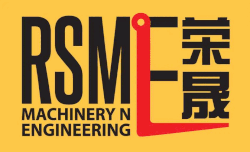Comprehensive Forklift Maintenance Tips for Optimal Performance
- Ruqian Sim
- Dec 18, 2024
- 3 min read
Updated: Dec 20, 2024

Regular forklift maintenance is essential for ensuring safety, improving operational efficiency, and extending the lifespan of your equipment. Without proper upkeep, forklifts are prone to breakdowns, costly repairs, and workplace accidents. Here’s a detailed guide to maintaining your forklift in top condition.
1. Create a Routine Maintenance Schedule
Establishing a regular maintenance routine is critical. A structured schedule ensures minor issues are detected and resolved before they escalate. Key maintenance intervals include:
Daily Checks: Basic inspections performed by operators before each shift.
Monthly Inspections: More detailed reviews by trained technicians.
Annual Servicing: Comprehensive evaluations involving thorough part replacements and testing.
2. Perform Daily Visual Inspections
Daily checks help identify potential problems early. Operators should inspect the following:
Fluid Levels: Check hydraulic oil, engine coolant, and brake fluid levels.
Tyres: Look for proper inflation and any signs of wear, damage, or cracks.
Forks and Attachments: Inspect for bends, cracks, or other deformations.
Brakes and Steering: Ensure both are functioning smoothly.
Warning Lights and Alarms: Confirm that all safety indicators are operational.
A quick walkaround inspection can prevent delays caused by unexpected breakdowns.
3. Ensure Safety During Maintenance
Safety is paramount when maintaining forklifts. Follow these best practices:
Always power off the forklift before performing any checks.
Use appropriate personal protective equipment (PPE) such as gloves and safety glasses.
Follow the manufacturer’s safety guidelines to avoid damage during maintenance.
Avoid working on hydraulic systems when under pressure.
4. Clean the Forklift Regularly
Dirt and debris can cause wear and tear on moving parts and reduce efficiency. Key areas to clean include:
Fork Frame and Mast: Remove buildup that could hinder smooth operation.
Engine Components: Prevent overheating by ensuring adequate ventilation.
Hydraulic Lines: Keep them free from grime to avoid leaks.
A clean forklift is easier to inspect and maintains higher performance levels.
5. Train Operators Thoroughly
Proper operator training directly impacts forklift maintenance. Skilled operators are more likely to:
Perform accurate pre-operation checks.
Operate the forklift safely to reduce wear on components.
Identify and report potential problems early.
Certified training programs ensure operators handle forklifts responsibly, extending their lifespan.
6. Engage Professional Technicians
While routine checks are essential, professional servicing provides in-depth assessments. Professional technicians can:
Perform detailed diagnostics to identify hidden issues.
Repair or replace worn parts with precision.
Ensure compliance with safety regulations and manufacturer guidelines.
Regular expert servicing can significantly reduce long-term maintenance costs.
7. Keep Accurate Maintenance Records
Documenting every maintenance activity provides:
A clear overview of the forklift’s service history.
Insights into recurring issues, helping to plan future repairs.
Proof of compliance with regulatory standards.
Use digital maintenance tools or logs to streamline record-keeping.
8. Check Attachments and Accessories
Attachments such as clamps, rotators, or side shifters require their own maintenance checks. Inspect for:
Secure connections to the forklift.
Damage or wear that could compromise functionality.
Proper alignment and movement during operation.
Benefits of Regular Forklift Maintenance
Safety: Reduces the risk of workplace accidents caused by equipment failure.
Cost Efficiency: Prevents costly emergency repairs and downtime.
Longevity: Extends the lifespan of your forklift and its components.
Compliance: Meets safety and regulatory standards, avoiding fines.
Conclusion
Maintaining forklifts isn’t just about keeping them running—it’s about ensuring workplace safety, meeting operational goals, and protecting your investment. By implementing a consistent maintenance routine, training operators, and leveraging professional servicing, you can maximise the efficiency and reliability of your forklifts.
Invest in maintenance today for safer, smoother operations tomorrow.




Excellent post! These comprehensive forklift maintenance tips are spot-on for ensuring peak performance and safety. Staying on top of regular inspections, cleaning, and servicing can drastically reduce downtime and extend the life of the equipment. A well-maintained forklift is a reliable one—thanks for the valuable insights!